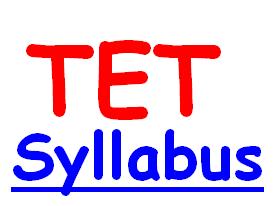ভূমির পরিমাণ পদ্ধতি ভূমি সংক্রান্ত যাবতীয় দলিলাদি লিখন, সরকারি হিসাব ও অফিসের কাজ ইত্যাদি যাবতীয় বিষয়ে ভূমির পরিমাপ হলো: (১) ডেসিমেল বা...
ভূমির পরিমাণ পদ্ধতি
ভূমি সংক্রান্ত যাবতীয় দলিলাদি লিখন, সরকারি হিসাব ও অফিসের কাজ ইত্যাদি যাবতীয় বিষয়ে ভূমির পরিমাপ হলো:
(১) ডেসিমেল বা শতাংশ বা শতক
(২) কাঠা,
(৩) বিঘা এবং
(৪) একর
এই পরিমাপ সর্ব এলাকায় সর্বজন গৃহীত। এটা “সরকারি মান” (Standard Measurement) বলে পরিচিত।
উক্ত পরিমাপের কতিপয় নিম্নে প্রদান করা হলোঃ
ইঞ্চি, ফুট ও গজঃ
১২” ইঞ্চি = ১ ফুট
৩ ফুট = ১ গজ
ভূমি যে কোন সাইজের কেন ভূমির দের্ঘ্য ও প্রস্থে যদি ৪৮৪০ বর্গগজ হয় তাহলে এটা ১.০০ একর (এক একর) হবে।
যেমনঃ ভূমির দৈর্ঘ্য ২২০ গজ এবং প্রস্থ ২২ গজ সুতরাং ২২০ গজ×২২ গজ= ৪৮৪০ বর্গগজ।
বর্গগজ/বর্গফুট অনুযায়ী শতাংশ ও একরের পরিমাণঃ
৪৮৪০ বর্গগজ = ১ একর ধরে
৪৮৪০ বর্গগজ = ১ একর
৪৩৫৬০ বর্গফুট= ১ একর
১৬১৩ বর্গগজ= ১ বিঘা
১৪৫২০বর্গফুট= ১ বিঘা
৪৩৫.৬০ বর্গফুট= ০১ শতাংশ
৮০.১৬ বর্গগজ= ১ কাঠা
৭২১.৪৬ বর্গফুট= ১ কাঠা
৫.০১ বর্গগজ = ১ ছটাক
২০ বর্গহাত = ১ ছটাক
১৮ ইঞ্চি ফুট= ১ হাত (প্রামাণ সাই)
কাঠা, বিঘা ও একরের মাপঃ
১৬ ছটাক = ১/ কাঠা
০.০১৬৫ অযুতাংশ = ১/কাঠা
০.৩৩ শতাংশ বা ০.৩৩০০ অযুতাংশ = ১ বিঘা
২০ (বিশ) কাঠা = ১ বিঘা
১ একর = ৩ বিঘা ৮ ছটাক = ৬০.৫ কাঠা
টিকাঃ
একশত শতাংশ বা এক হাজার সহস্রাংশ বা দশ হাজার অযুতাংশ= ১.০০ (এক) একর। দশমিক বিন্দুর (.) পরে চাষ অঙ্ক হলে অযুতাংশ পড়তে হবে।
মিলিমিটার ও ইঞ্চিঃ
১ মিলিমিটার= ০.০৩৯৩৭ (প্রায়)
১ সেন্টিমিটার= ০.০৩৯৩৭ (প্রায়)
১ মিটার = ৩৯.৩৭ ইঞ্চি বা ৩.২৮ ফুট/ ১.০৯৩ গজ (প্রায়)
১০০০ মিটার = ১ কিলোমিটার
১ কিলোমিটার= ১১ শত গজ
২ কিলোমিটার = (সোয়া মাইল)
১৭৬০ গজ = ১ মাইল
১৩২০ গজ = পৌন এক মাইল।
৮৮০ গজ = আধা মাইল
৪৪০ গজ = পোয়া মাইল।
১ বর্গ মিটার = ১০.৭৬ বর্গফুট (প্রায়)
১ হেক্টর = ২.৪৭ একর (প্রায়)
১ ইঞ্চি = ২.৫৪ সেন্টিমিটার (প্রায়)
গান্টার শিকল জরীপঃ
ভূমির পরিমাপ পদ্ধতি সঠিক এবং সহজ করার জন্য ফরাসী বিজ্ঞানী এডমন্ড
গান্টা এই পদ্ধতি আবিষ্কার করেন। তিনি ভূমি পরিমাপের জন্যে ইস্পাত দ্বারা
এক ধরণের শিকল আবিষ্কার করেন। তিনি ভূমি পরিমাপের জন্য ইস্পাত দ্বারা এক
ধরণের শিকল আবিষ্কার করেন। পরবর্তীতে তার নাম অনুসারেই এই শিকলের নামকরণ
করা হয় গান্টার শিকল। আমাদের দেশে গান্টার শিকল দ্বারা জমি জরিপ অত্যন্ত
জনপ্রিয়। একর, শতক এবং মাইলষ্টোন বসানোর জন্য গান্টার শিকল অত্যন্ত উপযোগী।
এই শিকলের দৈর্ঘ্য ২০.৩১ মিটার (প্রায়) বা ৬৬ ফুট
গান্টার শিকল ভূমি পরিমাপের সুবিধার্থে একে ১০০ ভাগে ভাগ করা হয় থাকে। এর প্রতিটি ভাগকে লিঙ্ক বা জরীপ বা কড়ি বিভিন্ন নামে ডাকা হয়।
প্রতি এক লিঙ্ক = ৭.৯২ ইঞ্চি
দৈর্ঘ্য ১০ চেইন ×প্রস্থে ১ চেইন = ১০ বর্গ চেইন = ১ একর
গান্টার শিকলে ১০ লিঙ্ক বা ৭৯.২ ইঞ্চি পর পর নস বা ফুলি স্থাপন করা হয় (নস ফুলি)
২০ লিঙ্ক বা ১৫৮.৪ ইঞ্চি পর স্থাপিত হয়-
৩০ লিঙ্ক বা ২৩৭.৩ ইঞ্চি পর স্থাপিত হয়-
৪০ লিঙ্ক বা ৩১৬.৮ ইঞ্চি পর স্থাপিত হয়-
৫০ লিঙ্ক বা ৩৯৬.০ ইঞ্চি পর স্থাপিত হয়-
৮০ গান্টার বা ১৭৬০ গজ পর স্থাপিত হয়- মাইল ষ্টোন
একর শতকে ভূমির পরিমাপ
১০০ লিঙ্ক = ১ গান্টার শিকল
১০০০ বর্গ লিঙ্ক = ১ শতক
১,০০,০০০ বর্গ লিঙ্ক = ১ একর
আমাদের দেশে জমি-জমা মাপ ঝোকের সময় চেইনের সাথে ফিতাও ব্যবহার করা হয়।
সরকারি ভাবে ভূমি মাপার সময় চেইন ব্যবহার করা হয় এবং আমিন সার্ভেয়ার
ইত্যাদি ব্যাক্তিগণ ভূমি মাপার সময় ফিতা ব্যবহার করেন। ভূমির পরিমান বেশি
হলে চেইন এবং কম হলে ফিতা ব্যবহার করাই বেশি সুবিধাজনক।
বিভিন্ন প্রকারের আঞ্চলিক পরিমাপ
আমাদের দেশে অঞ্চলভেদে বিভিন্ন প্রকারের মাপ ঝোক প্রচলিত রয়েছে। এগুলো
হলো কানি-গন্ডা, বিঘা-কাঠা ইত্যাদি। অঞ্চলে ভেদে এই পরিমাপগুলো আয়তন
বিভিন্ন রকমের হয়ে তাকে। বিভিন্ন অঞ্চলে ভূমির পরিমাপ বিভিন্ন পদ্ধতিতে
হলেও সরকারি ভাবে ভূমির পরিমাপ একর, শতক পদ্ধতিতে করা হয়। সারাদেশে একর
শতকের হিসাব সমান।
কানিঃ
কানি দুই প্রকার। যথা-
(ক) কাচ্চা কানি
(খ) সাই কানি
কাচ্চা কানি: ৪০ শতকে এক বাচ্চা কানি। কাচ্চা কানি ৪০ শতকে হয় বলে একে ৪০ শতকের কানিও বলা হয়।
সাই কানিঃ
এই কানি কোথাও ১২০ শতকে ধরা হয়। আবার কোথাও কোথাও ১৬০ শতকেও ধরা হয়।
কানি গন্ডার সাথে বিভিন্ন প্রকারের পরিমাপের তুলনা
২ কানি ১০ গন্ডা (৪০ শতকের কানিতে) = ১ একর
১ কানি = ১৭২৮০ বর্গফুট
১ কানি = ১৯৩৬ বর্গগজ
১ কানি = ১৬১৯ বর্গমিটার
১ কানি = ৪০ বর্গ লিঙ্ক
১ একর = ১০ বর্গ চেইন
১ একর = ১০০ শতক
১ একর = ৪,০৪৭ বর্গমিটার
১ একর = ৩ বিঘা ৮ ছটাক
১ একর = ৬০.৫ কাঠা
১ শতক = ১ গন্ডা বা ৪৩২.৬ বর্গফুট
বিঘা-কাঠার হিসাব
১ বিঘা = (৮০ হাত×৮০ হাত) ৬৪০০ বর্গহাত
১ বিঘা = ২০ কাঠা
১ কাঠা = ১৬ ছটাক
১ ছটাক = ২০ গন্ডা
১ বিঘা = ৩৩,০০০ বর্গলিঙ্ক
১ বিঘা = ১৪,৪০০ বর্গফুট
১ কাঠা = ৭২০ বর্গফুট
১ ছটাক = ৪৫ বর্গফুট
লিঙ্ক এর সাথে ফুট ও ইঞ্চির পরিবর্তন
লিঙ্ক = ৭.৯ ইঞ্চি
৫ লিঙ্ক = ৩ ফুট ৩.৬ ইঞ্চি
১০ লিঙ্ক = ৬ ফুট ৭.২ ইঞ্চ
১৫ লিঙ্ক = ৯ ফুট ১০.৮ ইঞ্চি
২০ লিঙ্ক = ১৩ ফুট ২.৪ ইঞ্চি
২৫ লিঙ্ক = ১৬ ফুট ৬.০ ইঞ্চি
৪০ লিঙ্ক = ২৬ ফুট ৪.৮ ইঞ্চি
৫০ লিঙ্ক = ৩৩ ফুট
১০০ লিঙ্ক = ৬৬ ফুট
এয়র হেক্টর হিসাব
১ হেক্টর = ১০,০০০
১ হেক্টর = ২.৪৭ একর
১ হেক্টর = ৭.৪৭ বিঘা
১ হেক্টর = ১০০ এয়র









.png)
